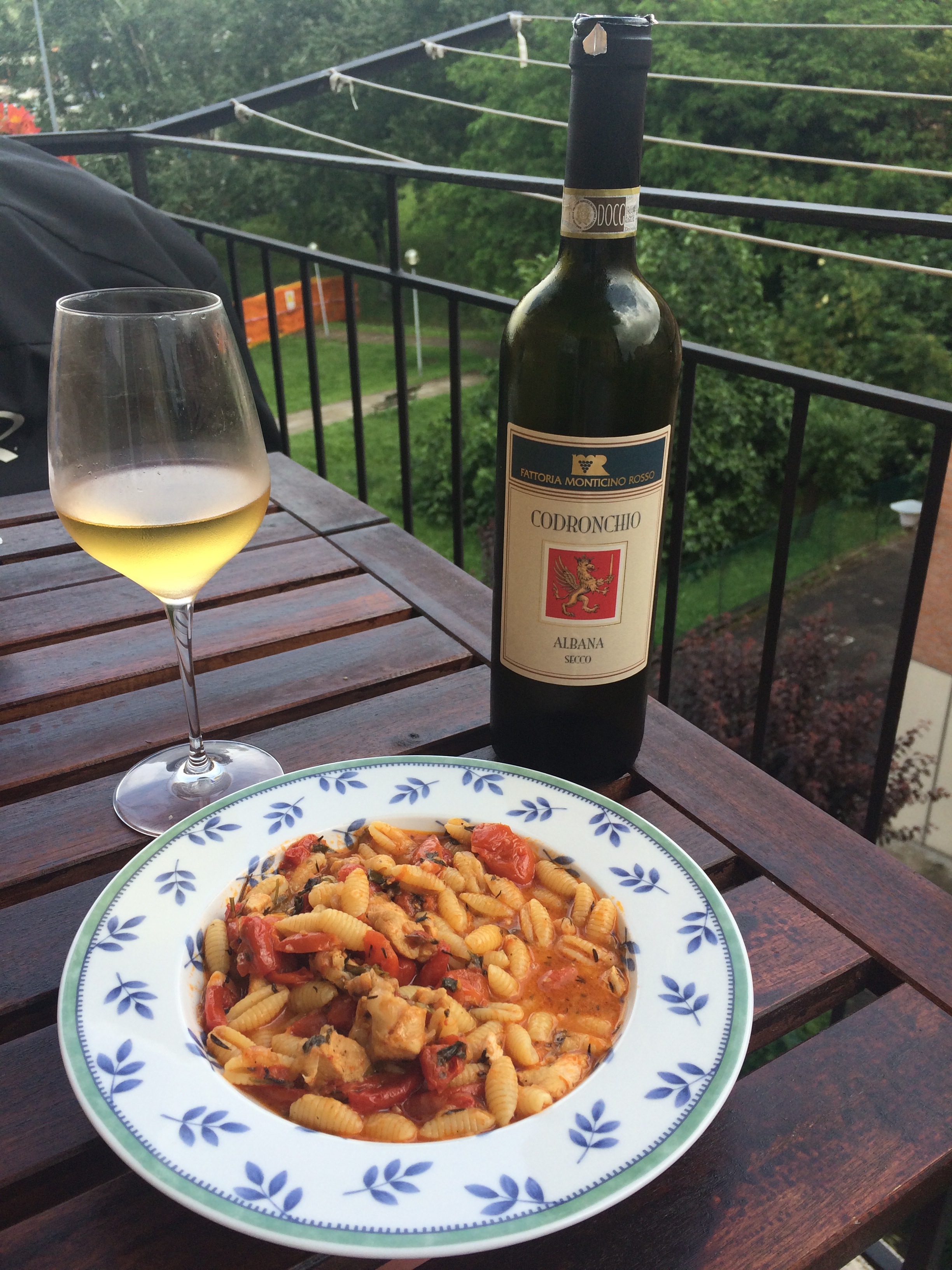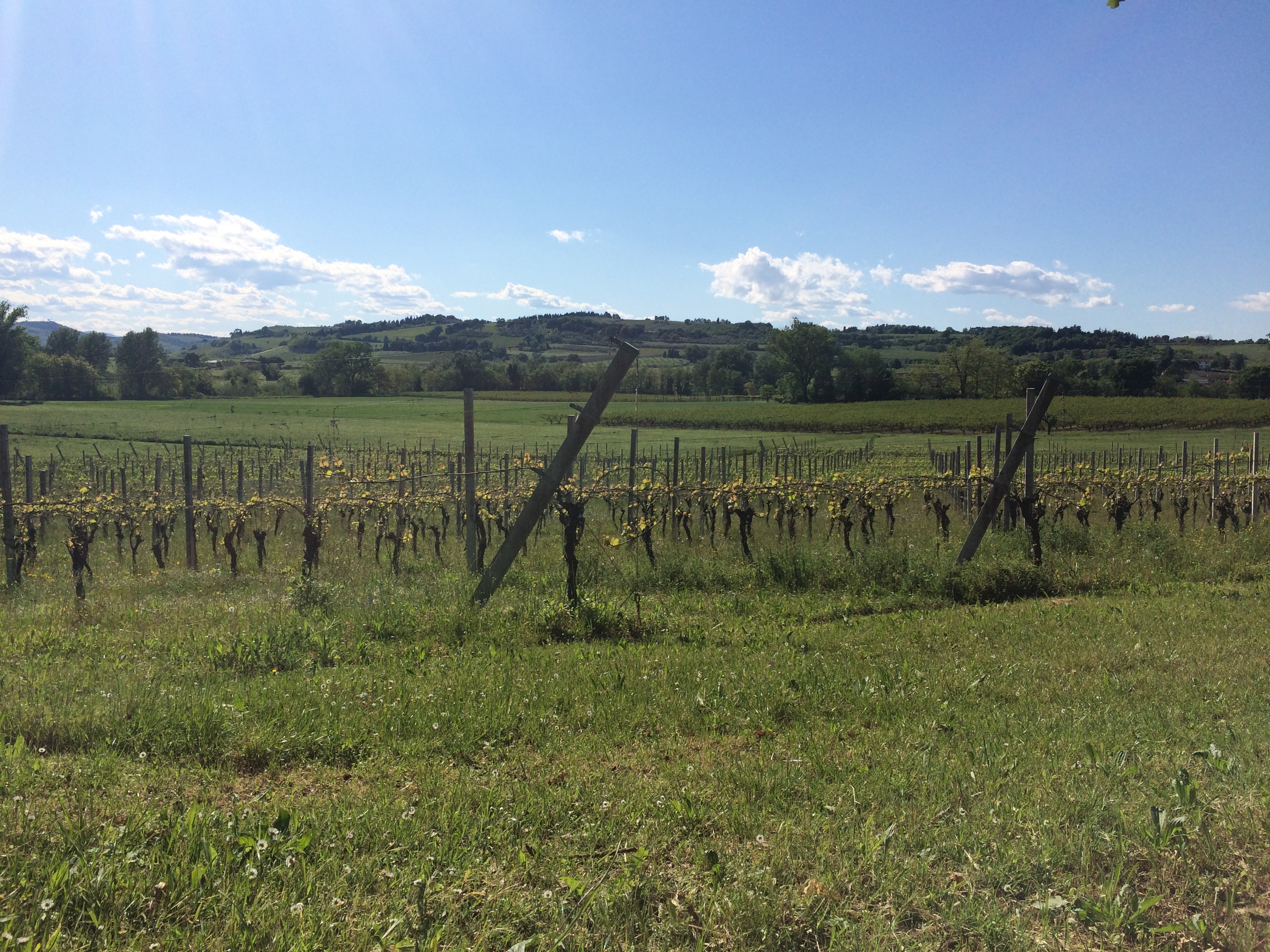It’s been a while since I’ve published on my personal blog… Here is my latest. Going out to those needing healing from the passing of someone close to them.

Read my latest article to understand my attachment to jasmine flower.
It’s been a while since I’ve published on my personal blog… Here is my latest. Going out to those needing healing from the passing of someone close to them.

Read my latest article to understand my attachment to jasmine flower.
Check out my latest article to help beat the winter blues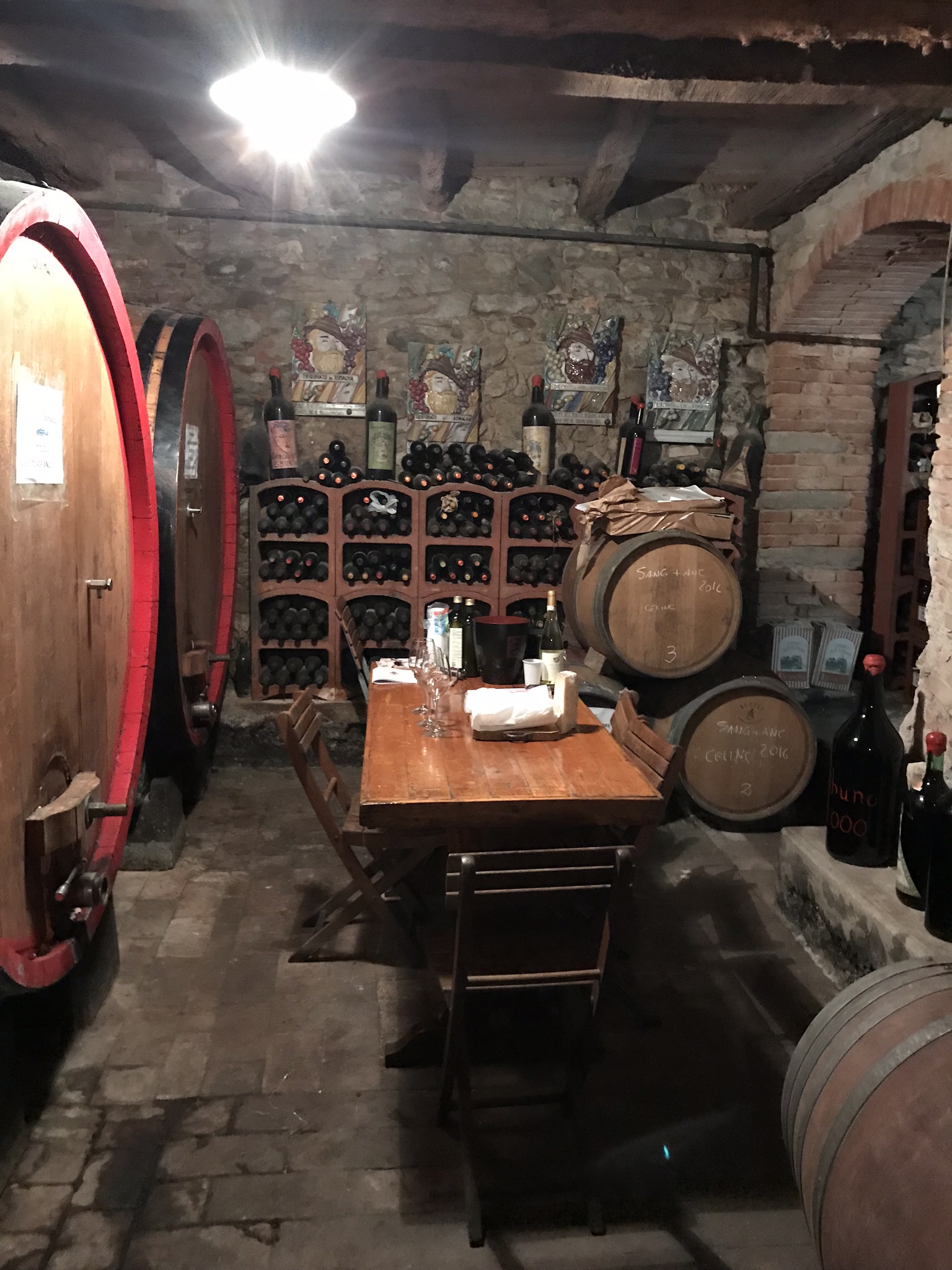 !
!
Hello readers,
With Christmas, New Years and other holidays approaching, I’ve decided to go for a more philosophic reflection on dealing with life’s unexpected events while still moving forward with our lives. It is, though, related to wine… gotta read to the end to find out!
Wishing you all peace and joy during this special season!
Ciao for now,
Sheila
Check out my exclusive interview here with the Sicilian natural winemaker everyone is talking about, Arrianna Occhipinti!
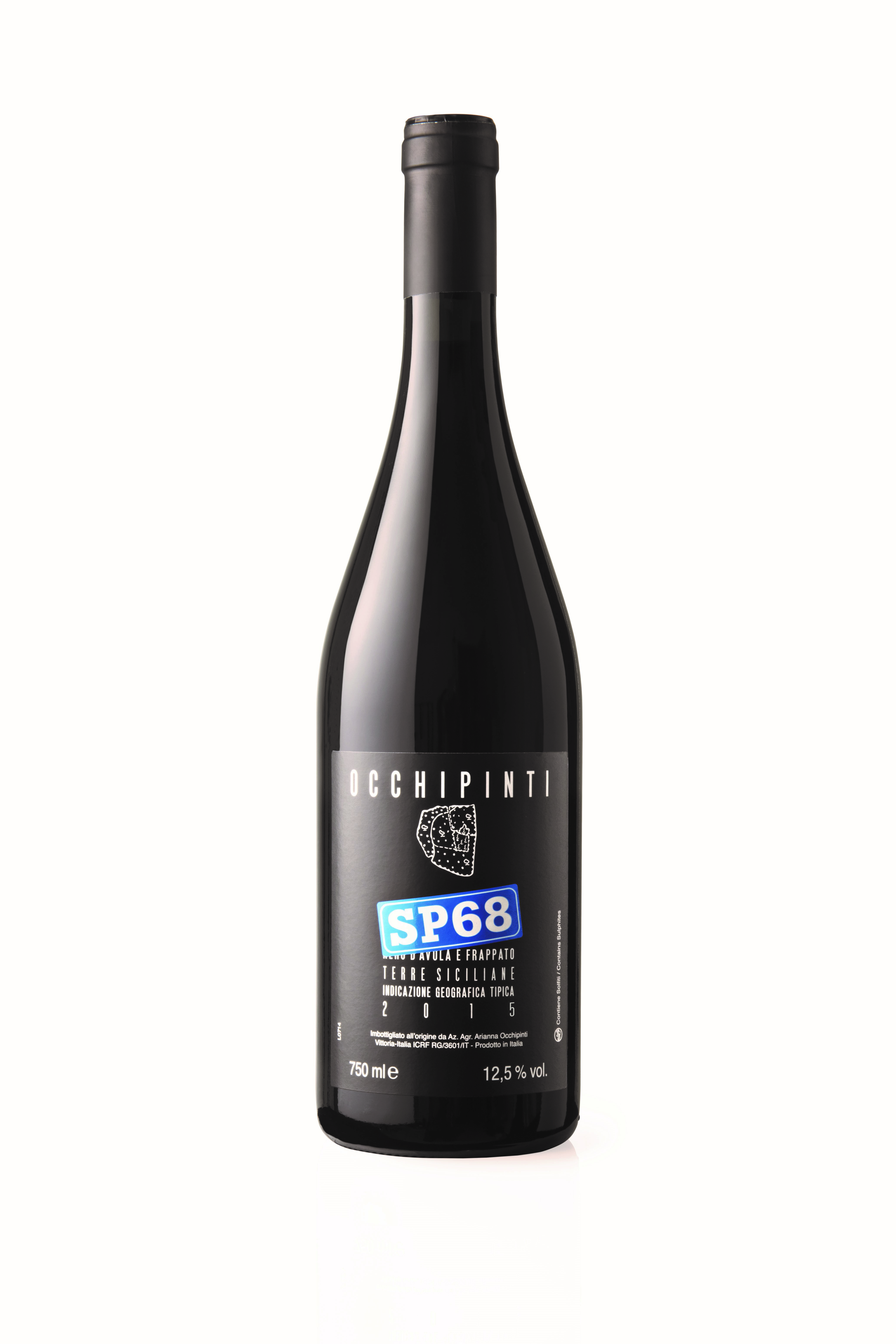
Ciao for now,
Sheila
I have some choice wines sitting in my basement ‘wine cellar’, not to keep as an investment, but to enjoy, and feed my curiosity, of seeing what wine will be like when it is aged up to its prime moment.
This weekend I broke out a 2001 Chianti Classico Riserva, Badia a Passignano by Antinori. This Chianti claims to use grapes from the best vineyards of the Chianti Classico DOCG area. Plus it won the top Tre Bicchieri evaluation from Gambero Rosso, so long ago that I did not find a write-up on it online, except for this in italian!
Opening up the wine, it was already showing its age, with the cork breaking in half and showing markings of mold on its label:
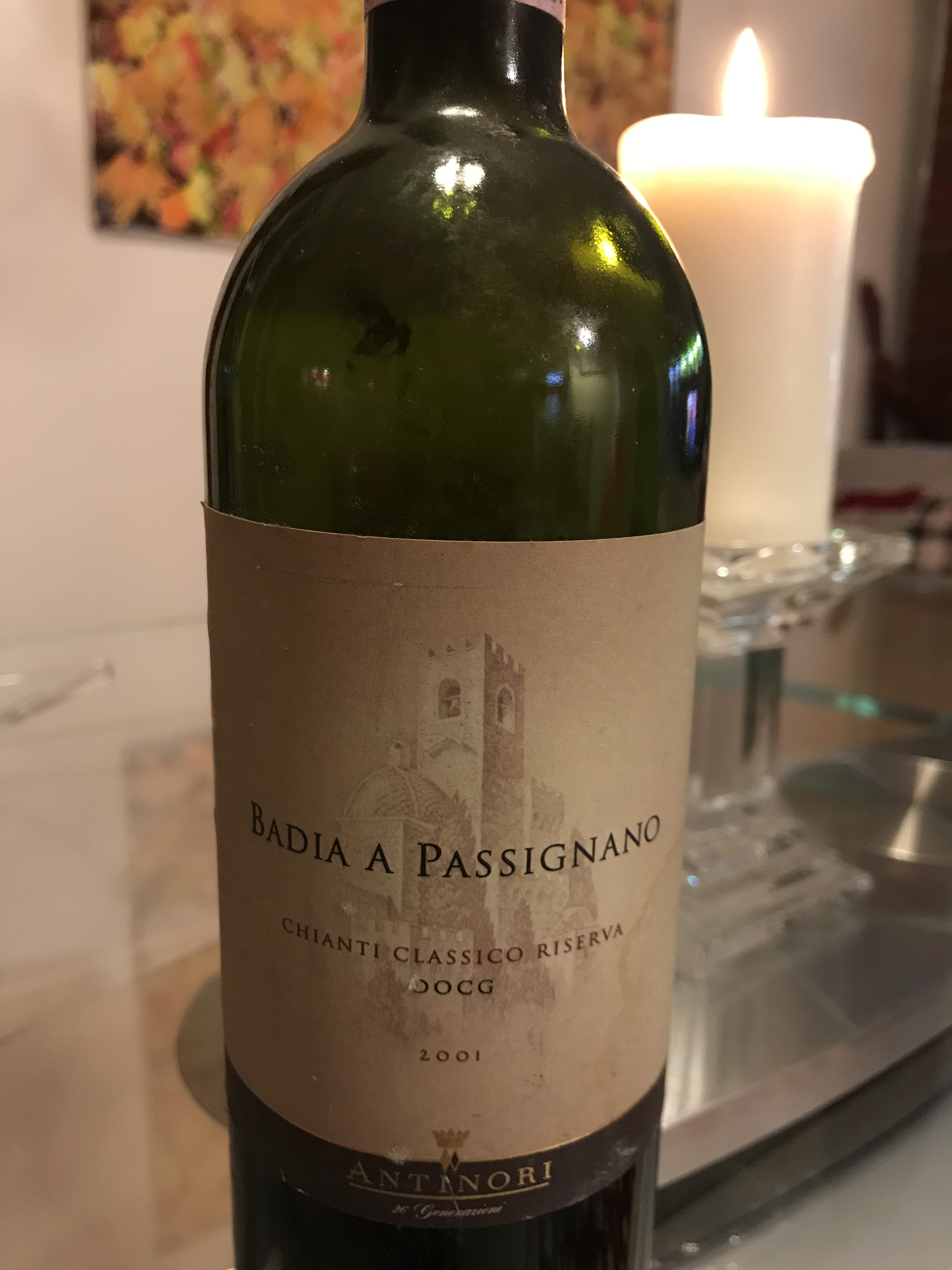
The first thing I noticed when pouring was the orange tint to the ruby red color, making me concerned that maybe I waited too long to open it up. Fortunately, when taking my first sniffs of the wine, I did not smell anything ‘bad’, although, at first, it didn’t have a bouquet that really spoke to me. So I waited patiently for a half hour to let the wine breath and warm up a bit. Sure enough, the bouquet opened up, like a timid child who you meet that initially runs to its mother and then, after patience and persistence, starts talking to you a mile a minute. I started to notice an earthy aroma, like a vegetable garden, and then I smelled mature fruit, like prunes aged in alcohol, then spices, like vanilla, then tobacco, eucalyptus and dark chocolate, even shoe leather! The more I explored, the more I discovered. This was becoming an adventure!
When tasting, the tannins were nicely mellowed, yet still very much present, so I could have even aged it more. With the aging, the typically harsh features of an important red wine like this had mellowed out with the softer aspects, making it well balanced. And the finish lasted for so long, that I could still feel it in my mouth after 15 minutes.
So, I think I like this strategy of experimenting with aging wine. It is almost like I am an extension to the wine producer, making a great wine even better!
Ciao for now,
Sheila
As a follow-on from my Linkedin blog post on global wine business trends from Vinitaly 2017, here are some highlights from my tasting expeditions at Vinitaly:
Being an American, my formative years in wine appreciation were based on full bodied wines, like California chardonnays. Hence I lean towards more mature and developed white wines. One that fits the bill is this blend of 3 italian native grapes, Malvasia Istriana, Ribolla Gialla and Friulano, called Lalinda from a producer in Northeastern Italy La Tunella. This wine recently was garnered with the prestigious Tre Bicchieri rating from Gambero Rosso:
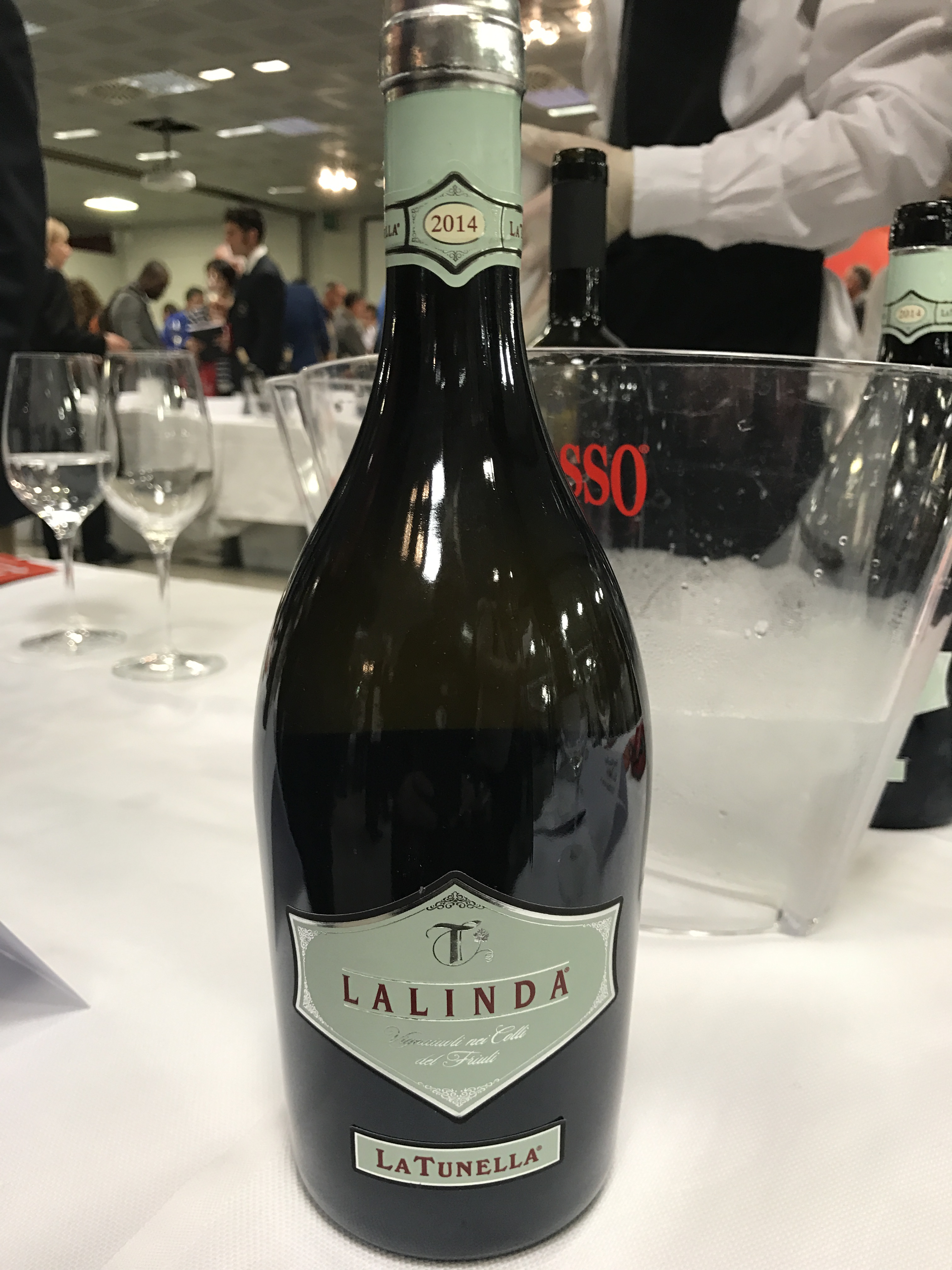
I had the pleasure of meeting Franco Roero and his son Gianluca from Piedmont 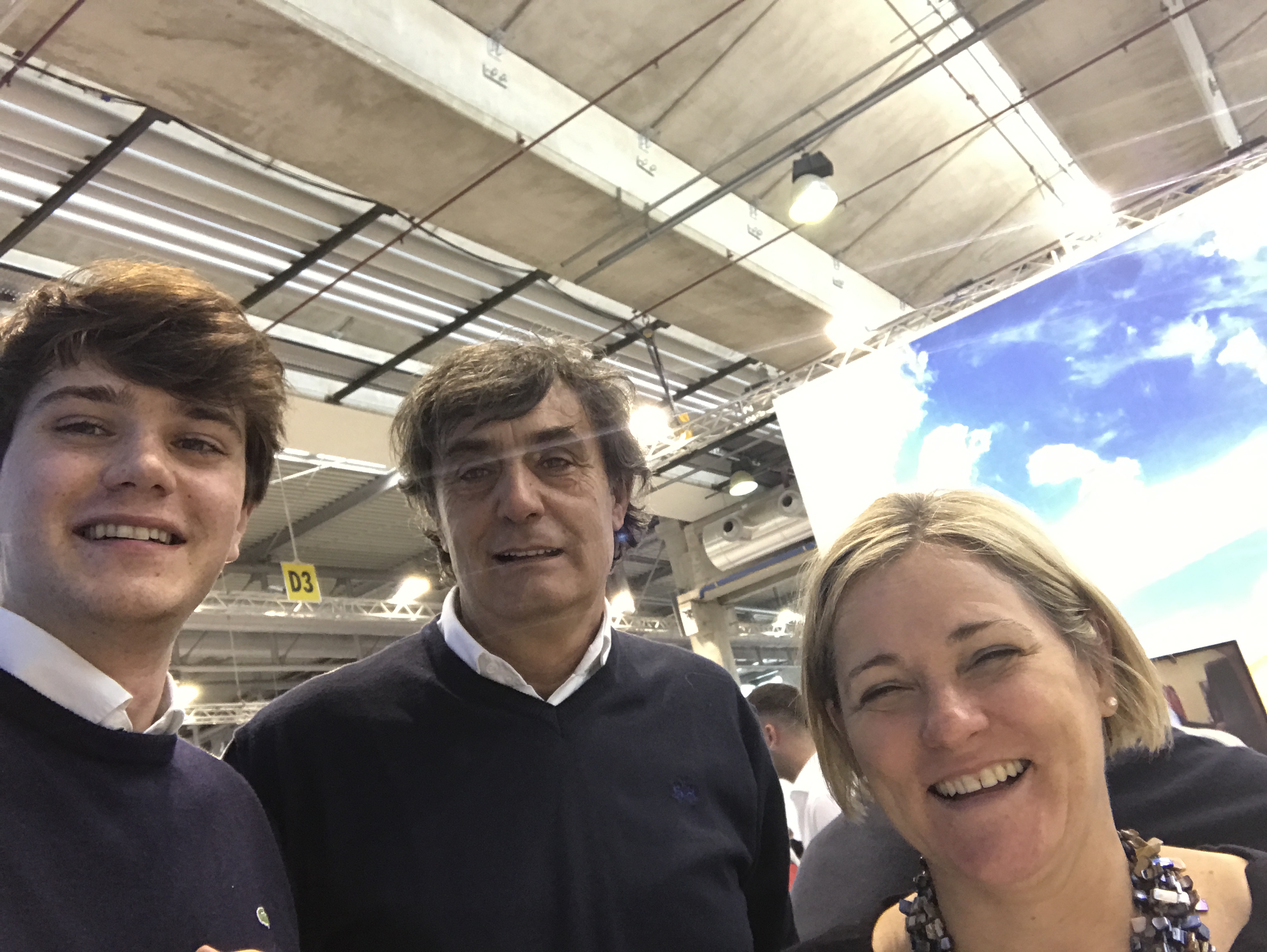
whose Barbera d’Asti Superiore, Carbunè, was fruity, robust yet enveloped my mouth in a seductive way… quite complex for a wine which was not even matured in wood. This wine is also a favorite with the locals. If you are in NYC on April 24th, I will bring a bottle to taste at the wine tasting that Veritas Studio Wines is having that evening.
Last but not least, I tried the fantastic Taurasi wines of the producer Roberto DiMeo 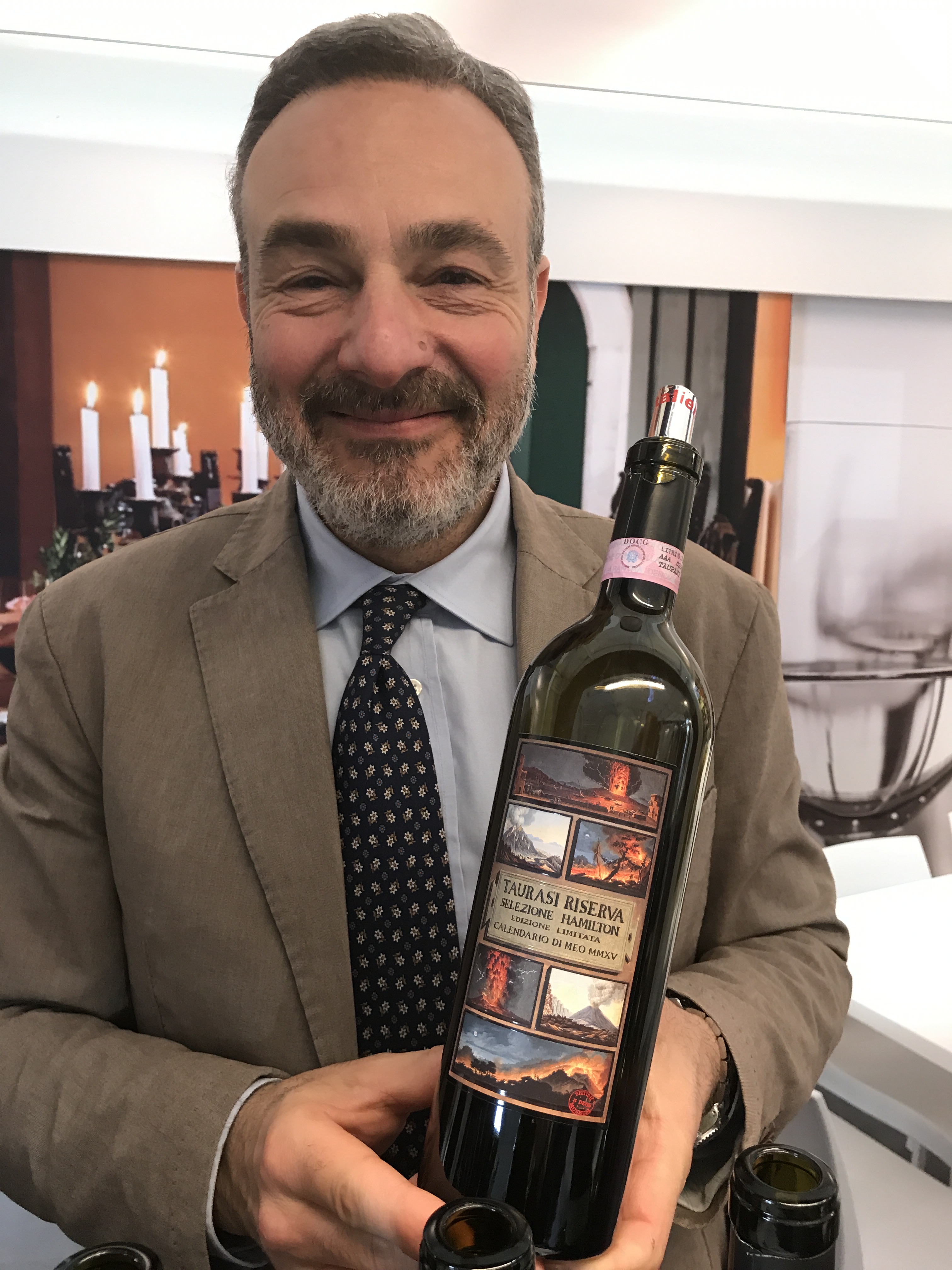
in Avellino area, which is in the hills east of Naples. Taurasi is an acclaimed red wine made from the native grape variety, Aglianico. It’s one of my favorite italian red wines, spicy, rich and intense. I personally liked the 2008, as well as the Aglianico from 2013. He also makes great white wines. You gotta try Vittorio 2007, made from the Greco di Tufo, another native grape variety. It is very complex and balanced, a feat for an unoaked white wine!
Ciao for now,
Sheila
I never used the word ‘artisan’ before moving to Italy. In fact, it was really not part of my vocabulary until after hearing the word ‘artigiano’ in Italy used over and over again. In ordinary life in Italy, artisan gestures and style is what you see all around, from the barista making a cappuccino in the morning, to the fornaio in your local panificio, even in ‘office’ jobs, like in software development where I’ve seen Italians applying creativity and spontaneity to create innovative solutions. It’s a real strength of the country and an asset to leverage, something I particularly notice when I go ‘back home’ in the U.S. and listen to my compatriots’ positive impressions of what it’s like to live in Italy, many of which seem based on images of this country where beauty abounds, from nature and people to art and design.
When it comes to wine, Americans’ impression of Italian wine also conjures images of beauty and goodness, along with other positive aspects, like earthiness, diversity and genuineness, as shown in the results of this Wine Opinions, Vinitaly International 2017 Survey: 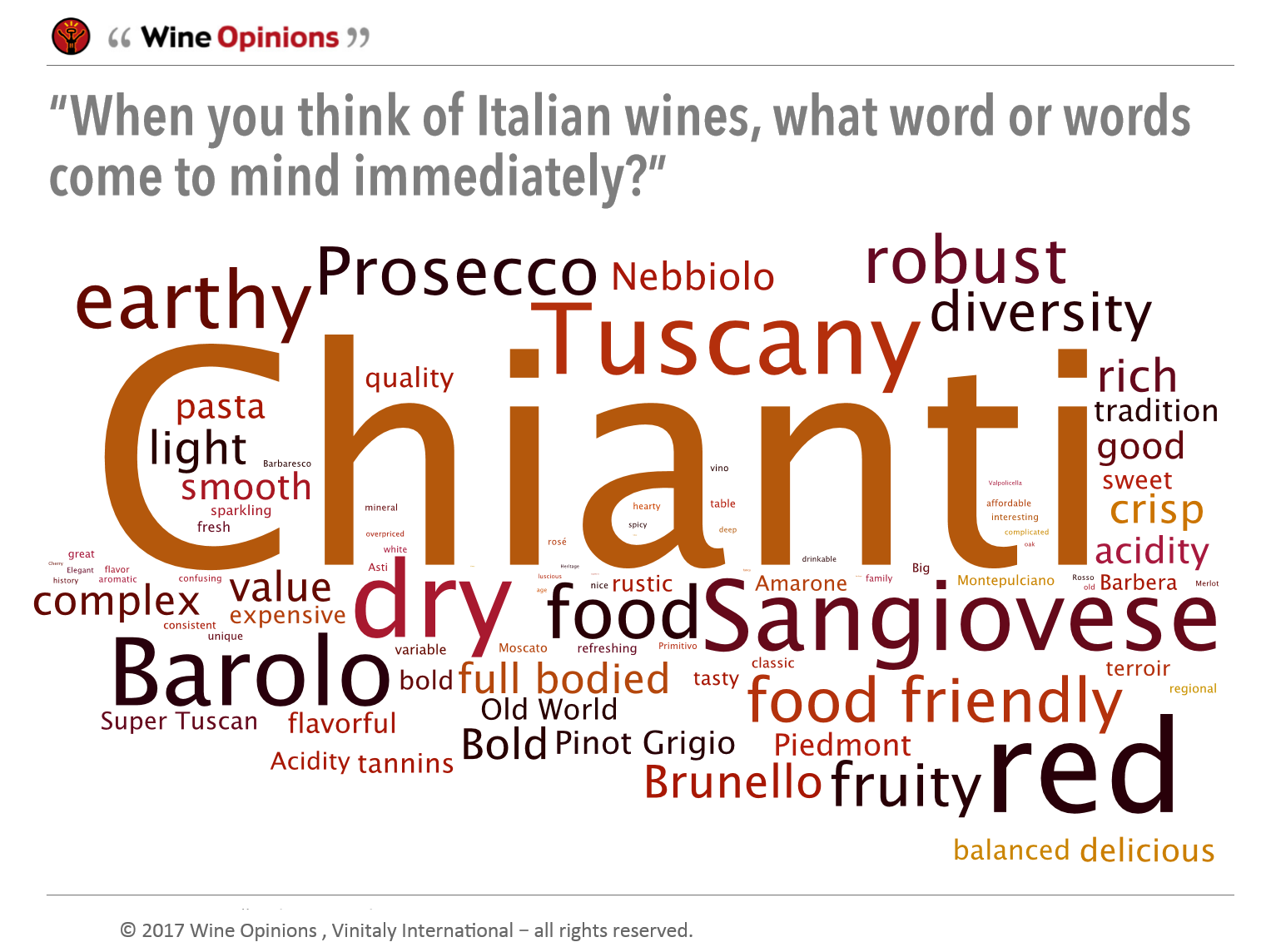
The variety, depth and tradition of viticulture and wine-making in Italy is what made me dive into Italian wine appreciation, becoming a sommelier, engaging in ‘fun’ wine past-times and now pursuing wine as an aspect of my career.
When in New York recently at a Gambero Rosso wine event which was showcasing producers who were nominated for this year’s prestigious ‘Tre Bicchieri’ award, I was pleasantly surprised to find a local producer from Bertinoro in Romagna, Celli , whose dry white wine ‘Albana Secco I Croppi’ 2015 won Tre Bicchieri. It is a minerally and intense white wine with a nice golden color made in a genuine fashion with steel fermentation and goes great with many pasta, poultry and fish dishes.
Here is the wine producer, Mauro Sirri, proudly showing off his Tre Bicchieri Albana Secco in New York in Feb 2017: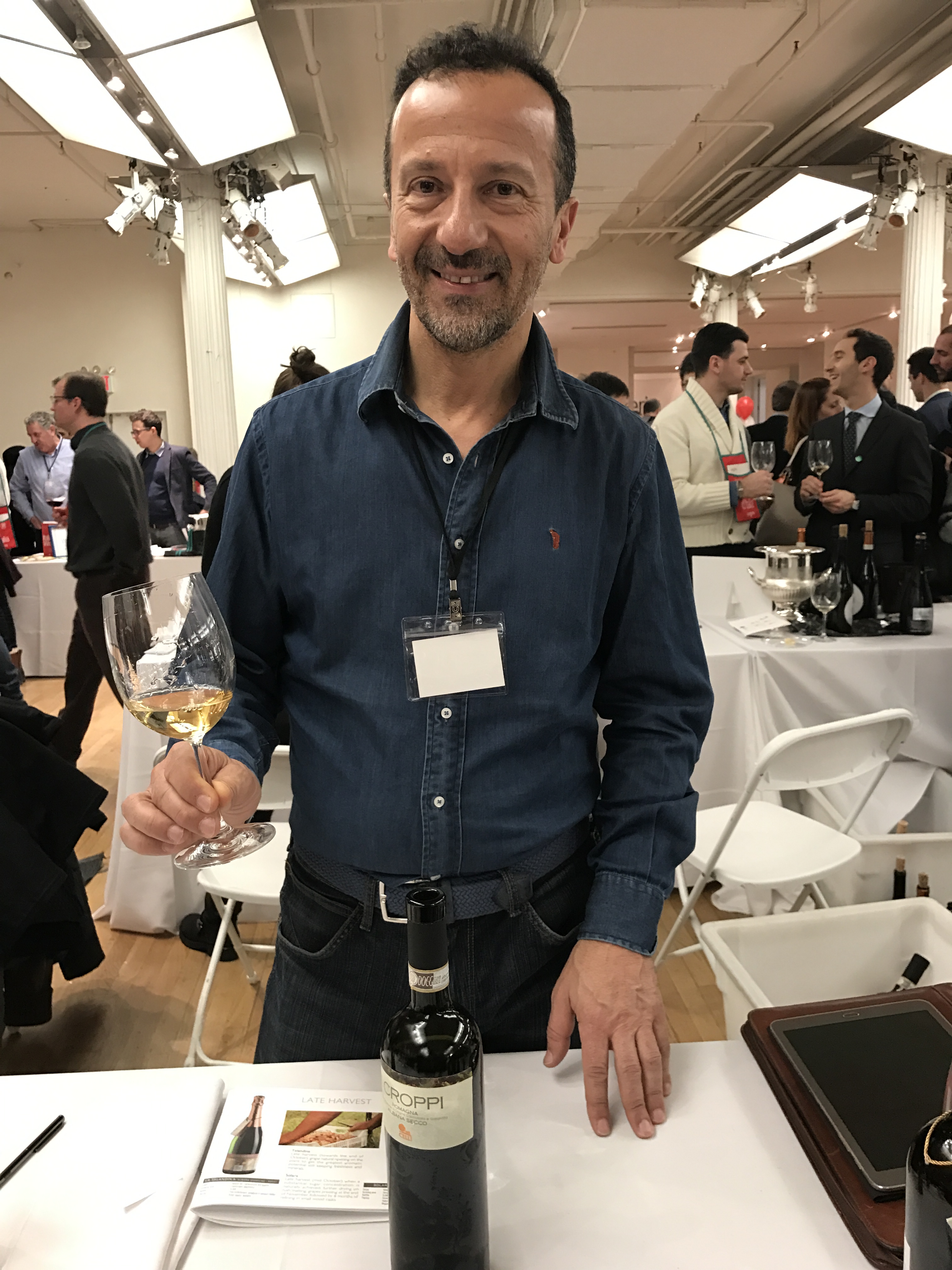
I’d also recommend this Sangiovese di Romagna Superiore, Le Grillaie Riserva, a complex, bold red wine which pairs well with meat dishes: 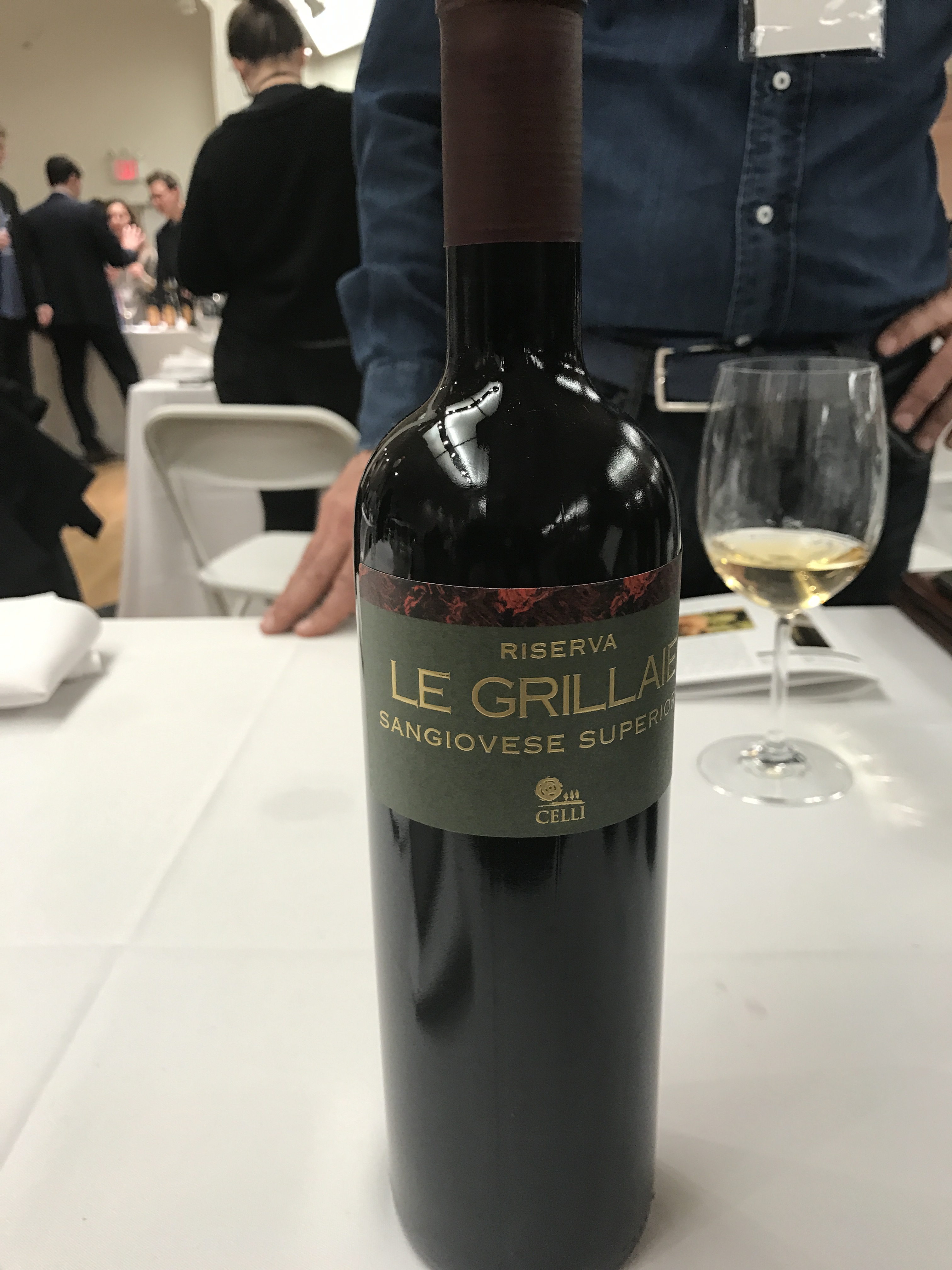
Ciao for now,
Sheila
In the beautiful Bolognese hills lies wine producer & ‘rustic farm resort’, Corte d’Aibo http://www.cortedaibo.it/ , which started in the late 80’s with a vision to produce local wines in the most natural way possible and to create a place for people to enjoy the fruits of nature, from farm-to-table food to accommodation amongst beautiful scenery.
Back then, the concept of organic, or ‘bio’ wines, in the Emilia Romagna region in North-Central Italy was in its infancy. The local government was eager to get it off the ground, so Corte d’Aibo was in the right place at the right time. Collaborating with local support, Corte d’Aibo began organic / bio grape cultivation and wine production. To this day, they continue to grow grapes and produce wines without use of chemicals, with little to no added sulfites, and by trying out with techniques which make their wines’ true natural characteristics stand out. For example, instead of aging wines in oak barrels, for some of their wines they introduced aging in terracotta cisterns, an ancient tradition used by Etruscans and other antique civilizations, which allows the wine characteristics to develop naturally without the ‘masking’ effect that wood can produce in wines.
They started their wine production with Pignoletto, a native Italian white wine grape whose best wines come from the Bolognese hills, along with Barbera, a red grape varietal best known in the Piedmont region but also widely diffused in Emilia Romagna. Today they produce Pignoletto, ranging from the most traditional ‘frizzante’, or sparkling, form which is great for an aperitivo, to Pignoletto Classico, which pairs well with many local dishes like tortellini and tortelloni, along with other whites, such as Savignon Blanc which cultivates well in the Bolognese hills. Besides Barbera, the other reds they produce are also varietals typically produced in the Bolognese hills, like Merlot and Cabernet Savignon. Many think that sangiovese is also produced in this area, but instead it is common to the Romagna area of Emilia Romagna (along with Tuscany, of course). The most interesting wine they have is Colfondo, which is a sparkling pignoletto made with the champagne method, in which the wine is fermented in the bottle, and aged for three years. It has a rich deep yellow color with delicate bubbles, an interesting, complex bouquet and a great finish. While they make a limited production of only 1000 bottles a year, it’s a nice treat!
For those of you who are sensitive to the effects of wine drinking, you may be interested in trying a red and white wine they make with no sulfites. Their white wine, Rugiada, and their red, Meriggio, are both wine grape blends and are pleasant, food friendly every-day drinking wines.
Ciao for now!
Sheila
